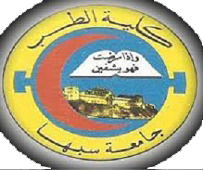مقرر علم التشريح
The course is covered in two parts in the first and second years of medicine.
It is designed for undergraduate medical student. The course is concerned with the study of normal structure of different parts of the human body with special emphasis on the clinically important points. The development background is presented to give students ability to understand and explain the different congenital anomalies. It also provides the students with knowledge concerning the normal structure of the human body at the level of the anatomical regions and organ and the study of the normal growth and development relevant to anatomical topics, also to correlate anatomical facts with their clinical applications.
- Learning Outcomes:
By the end of the course, student should be able to:
- Describe the surface landmarks of the underlying bones, muscles and tendons, and internal structures (main nerves, vessels and viscera).
- Describe the basic anatomical principles of the structure and relations of the different anatomical regions, organs and systems of the human body.
- Explain the different stages of human development, evolution and growth.
- Outline major clinical applications of anatomical facts.
- Interpret the normal anatomical structures on radiographs and ultrasonography.
- Practical Outcomes:
By the end of the course, student should be able to:
- Identify the different surface markings of internal structures and organs on the living subject.
- Identify the different internal structures in cadavers and preserved specimens.
- Apply the anatomical facts while examining the living subject in order to reach a proper diagnosis.
- Follow appropriate ethical and professional education necessary for dealing with cadavers.
- The course is covered in two parts in the first and second years of medicineEach year consists of:
- 50 hours lectures using data show providing a brief on the normal structure of different parts of the human body with special emphasis on the clinically important points (( 2 hours per lecture )).
- 150 hours practical for each group to discuss; identify and describe the different surface markings of internal structures and organs on the living subject, cadavers and preserved specimens.
- 25 hours tutorial to discuss the surface landmarks, anatomical principles and relations of structures and to interpret it on radiograph and ultrasonography.
- The course is covered in two parts in the first and second years of medicineEach year consists of:
- For each year:
- Written examination to assess knowledge and understandi Consists of both midterm examinations (( total of 15 marks )) (10%) and final written examination (( total of 60 marks )) (40%) .
- Oral examination to assess knowledge and understanding, attitude and general skills (( total of 45 marks )) ( 30%).
- Practical examination to assess 25 specimens identification.
- (( total of 30 marks )) (20%).
- Periodical examinations to assess knowledge by sheets examinations held after the dissection of each part including short questions, MCQ and drawings.
- Total marks for each year is 150 marks.
- For each year:

